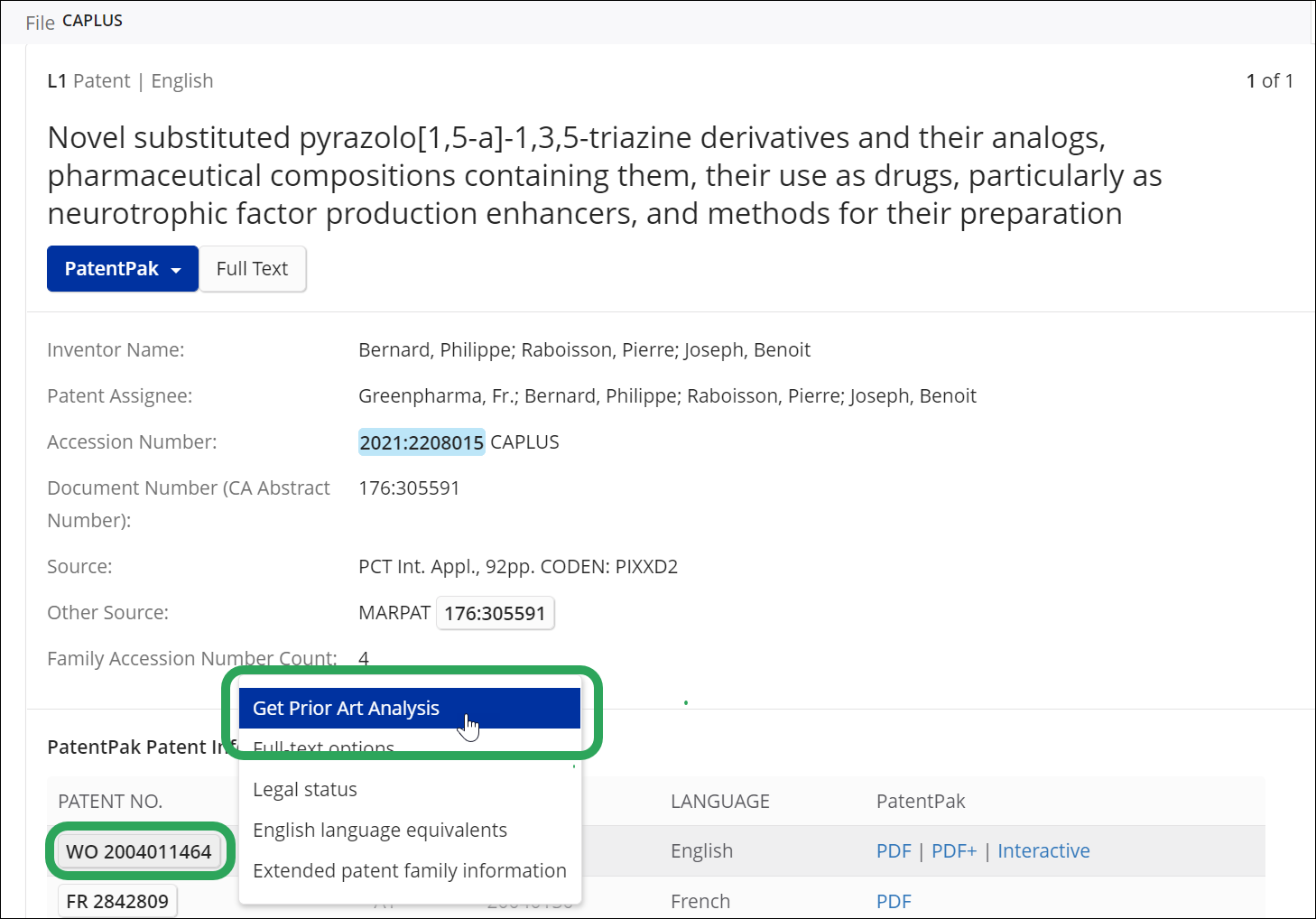
This feature allows a user to generate a prior art result set for patents in the CAplus and CA files.
A new Get Prior Art Analysis option is now present in the patent menu for patent publication numbers:

Selecting the option will generate a prior art result set for the given patent in a new L-number:
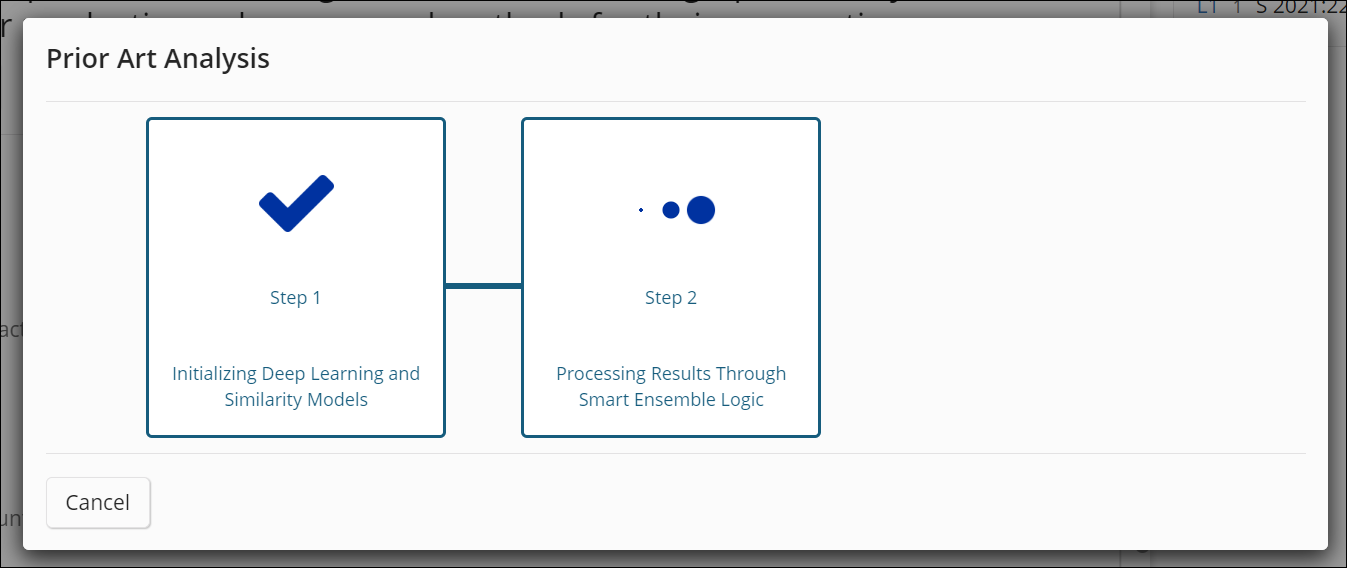
The prior art analysis result set will consist of Accession Numbers (ANs) for both patents and non-patent literature provided by the predictive engine and searched via a script in the HCAPLUS file. The searched ANs and the corresponding hit counts will be captured in the History tab, session, and the transcript:
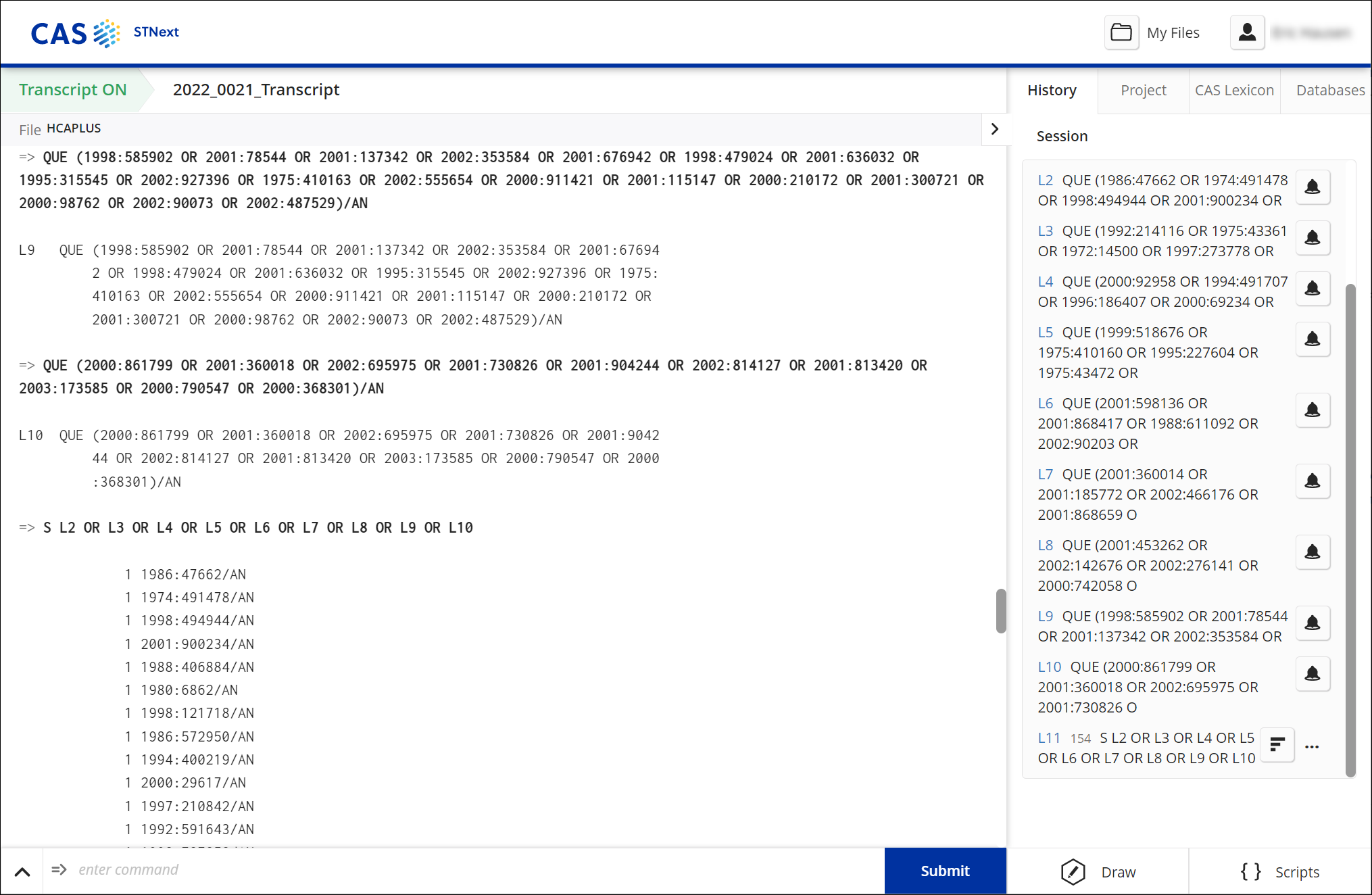

The predictive functionality helps find additional results that other search strategies might miss. In addition, because the capability utilizes indexing by CAS scientists, the result sets can also provide key insights into new topic areas and reduce the need for manual review and look up of relevant search terms. When developing new search strategies or exploring new areas of interest, the predictive capabilities can be used in conjunction with Analyze to quickly find guidance on controlled terms, substances, assignees, and patent classification codes for further exploration.
For merge motif searches, the Alignment tab title has been enhanced to show the number of children/variants for that result.
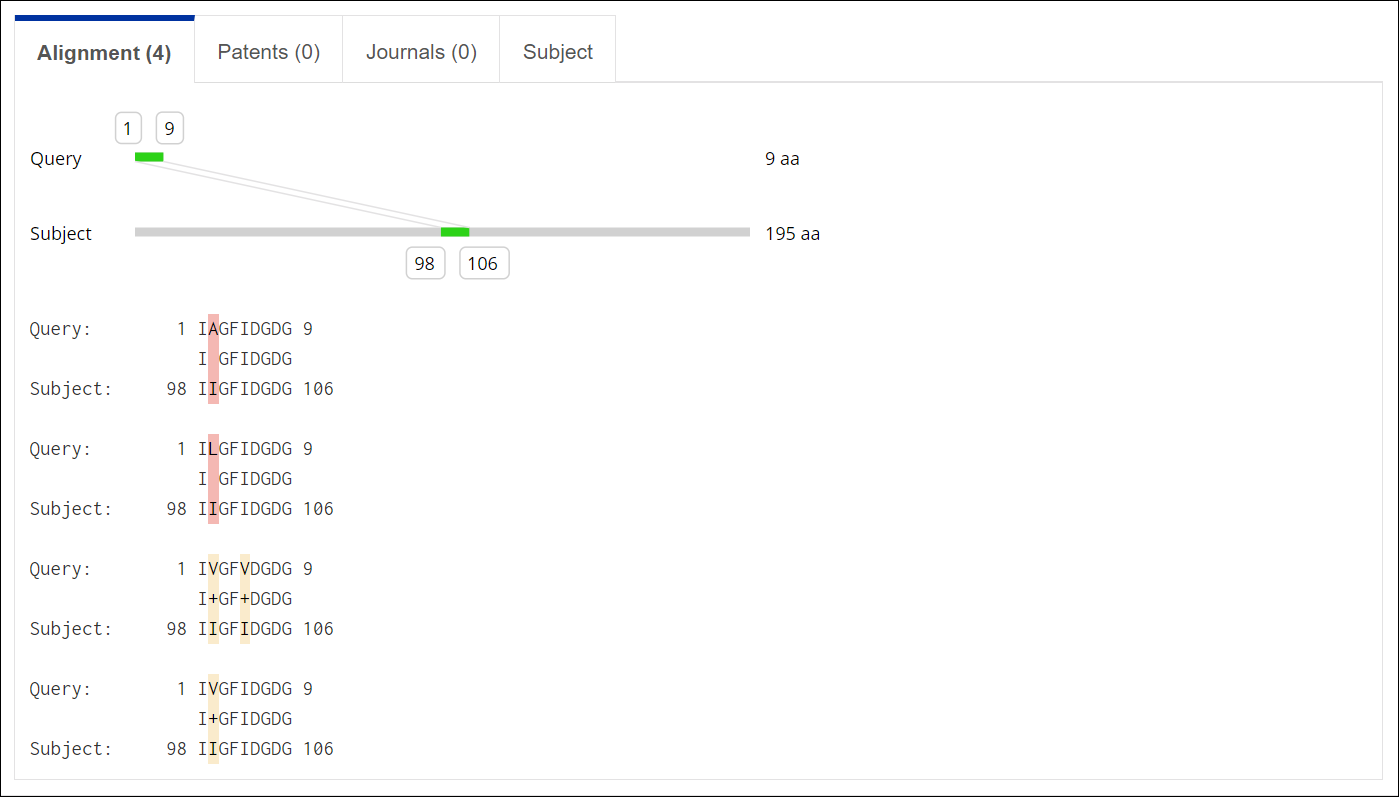
In addition, a column was added to the export .xls that provides the child/variant count for each result.

Claim fields (CLM, CLMN, ECLM) are now available for JP, KR, and EP patent records in CAplus and H/Z/CAplus, H/Z/L CA.
Note: The new content will start flowing into the databases on Monday (12/20) with backfile processing targeted to complete sometime Wednesday (12/22).
Derwent began fragmentation code indexing in 1963 as an early method for the electronic capture of chemical structure information (the codes themselves correspond to old IBM punch cards). As such, DWPI fragmentation codes are the oldest online resource for searching patent Markush structures in STNext and the only comprehensive source of Markush indexing from 1963-1977. Fragmentation codes could previously be searched as text queries from the command line, but with the launch of our new structure fragmentation code functionality, STNext now supports structure searching against this important data resource.
Note: Fragmentation Code Searching is enabled by special request only. Please contact your CAS representative to arrange access.
Fragmentation codes are alphanumeric representations of individual substance fragments:

Complete substances are then indexed as “paragraphs” of fragmentation codes:

Over time, Derwent expanded the scope of indexing to cover wider and wider areas of chemistry:
1963 Pharmaceuticals (B)
1965 Agricultural Chemicals (C)
1970 Code revision + General chemistry (E)
1972 Code revision + Ring Index Numbers
1981 Code revision + DRNs
1987 Markush graphical indexing + DCNs
1992 Autogeneration of codes
1999 Derwent Chemistry Resource
The new STNext fragmentation code functionality allows a structure to be translated into corresponding alphanumeric fragmentation codes and searched against the WPIX or WPIDS files via an STNext script. In STN Express, fragmentation code searching required the use of a modified structure editor and manual selection of content and query parameters before a search strategy could be generated.
In STNext, fragmentation code structures can be drawn with CASDraw and search strategies generated from the Structures page by clicking the ellipses (…) menu, and then selecting Generate FragCode Script:

Note: Please see FCO Input Format for a complete list of supported and unsupported structure components.
You may edit the system-generated Script Name as long as it is not the same as a pre-existing file on the Scripts page.

The system automatically converts a structure drawing into a fragmentation code search and prepares a search strategy in the form of an STN Script:
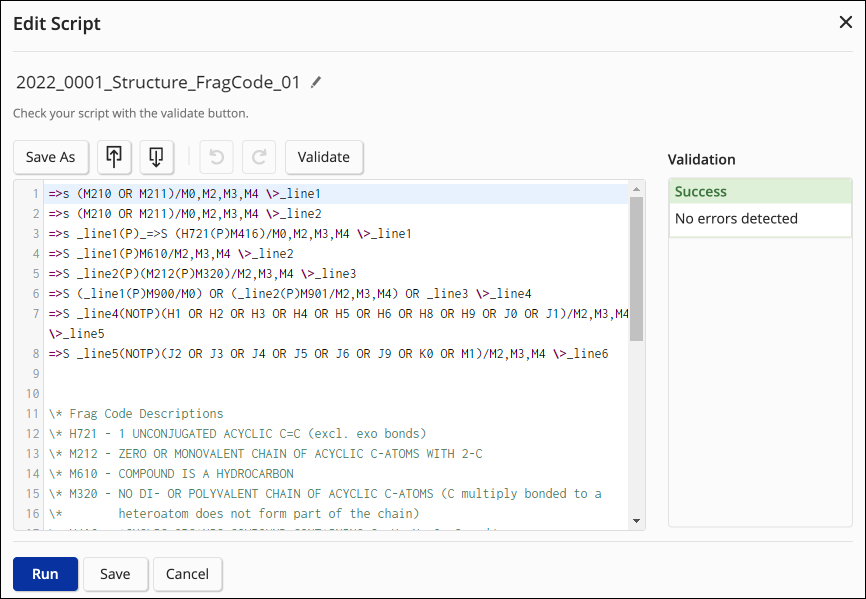
From the Edit Script window, the user may run the search in either the WPIX or WPIDS database or save the script for later use. In addition, the Edit Script window can be used to modify the search strategy by adding Other Code Concepts or adjusting the parameters of a search strategy.